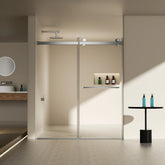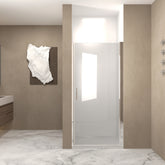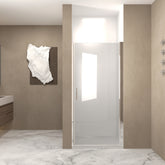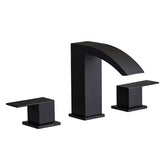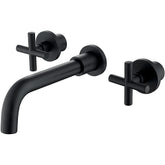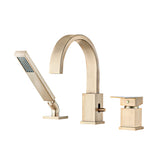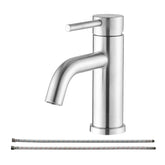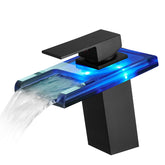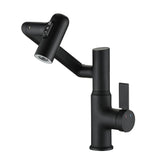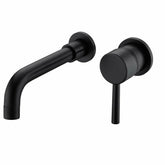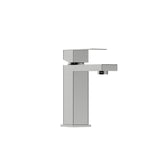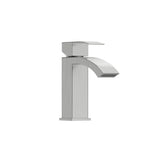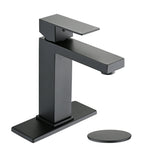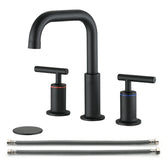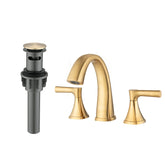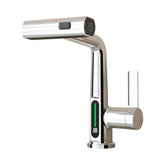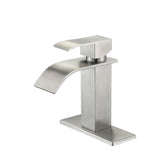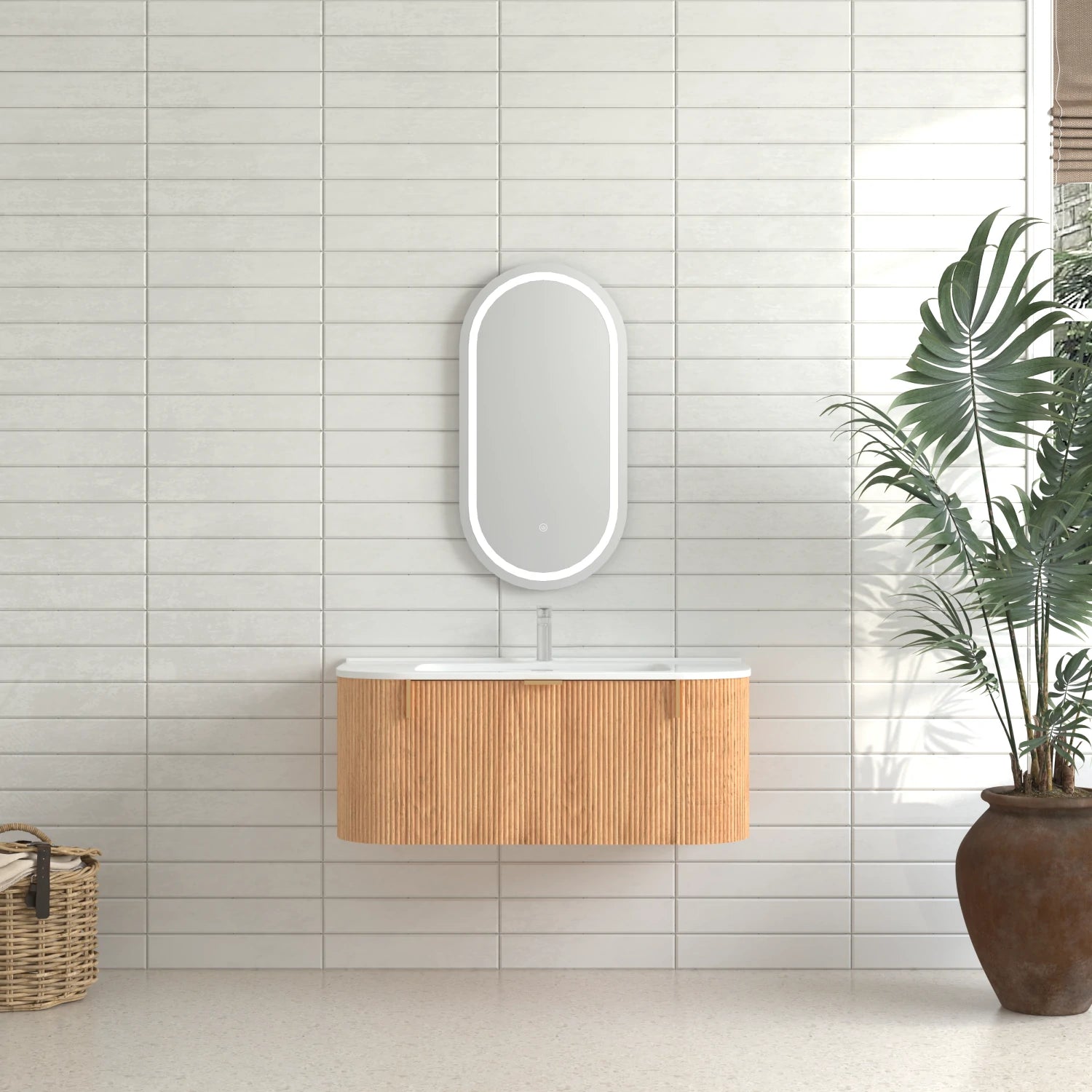Single-Hole vs. Widespread Faucets: Which Works Best?
1. Introduction
When I first started redesigning my bathroom, I realized that choosing a faucet was more than just picking a shiny fixture—it’s about balancing functionality, aesthetics, and space. Among the many styles available, the two most popular types that often cause confusion are the single-hole faucet and the widespread faucet. Both options can completely change the look and feel of your vanity area, but they also come with their own set of advantages and limitations.
Many homeowners find themselves asking the same question I once did: Which faucet style works best for my bathroom? The answer isn’t always straightforward. A single-hole faucet offers a sleek, modern, and space-saving design that’s ideal for minimalist setups or smaller vanities. In contrast, a widespread faucet brings a sense of elegance and traditional luxury, making it a perfect fit for larger spaces and classic interiors.
In this guide, I’ll walk you through the key differences between single-hole and widespread faucets, exploring their design, installation requirements, pros and cons, and ideal use cases. Whether you’re renovating your master bath or upgrading a guest vanity, this comparison will help you make a confident, well-informed choice that complements both your lifestyle and your design vision.

2. What Is a Single-Hole Faucet?
When I first learned about different faucet types, the single-hole faucet immediately stood out for its simplicity and streamlined design. As the name suggests, this faucet requires only one hole in the sink or countertop, combining both the spout and handle (or handles) into a single, compact unit. This makes it one of the most space-efficient options available, especially for small bathrooms or minimalist vanities.
Design and Structure
A single-hole faucet typically features one lever that controls both the water flow and temperature, although some models come with dual handles on the same base. The design is clean and functional, reducing visual clutter and making the sink area easier to maintain. Because the faucet body and controls are integrated, installation is straightforward—no need to align multiple components or drill extra holes.
Ideal Vanity Sizes and Styles
From my experience, single-hole faucets work best with smaller vanities or modern floating designs. They complement minimalist bathrooms where every inch counts and where the goal is to achieve a sleek, contemporary look. Whether it’s a compact powder room or an apartment bathroom, this type of faucet enhances both efficiency and style without overwhelming the countertop space.
Pros of Single-Hole Faucets
- Easy Installation: With only one hole required, it’s quicker and less complex to install, ideal for DIY projects.
- Modern Look: The integrated design brings a clean, sophisticated aesthetic to any vanity setup.
- Space-Saving: Perfect for small vanities or tight bathroom layouts where every inch matters.
- Simple Maintenance: Fewer components mean fewer places for dirt and water to collect.
Cons of Single-Hole Faucets
- Limited Handle Separation: Since the spout and handle are attached, you lose some flexibility in adjusting their spacing.
- Fewer Design Variations: Compared with widespread faucets, there are fewer classic or ornate options available, which might not suit traditional interiors.
Overall, I see the single-hole faucet as the perfect blend of efficiency, minimalism, and modern design. It’s an ideal choice for those who value simplicity and clean aesthetics, without compromising everyday functionality.

3. What Is a Widespread Faucet?
When I first came across a widespread faucet, I immediately noticed how its design added a sense of elegance and balance to the vanity. Unlike the single-hole faucet, a widespread faucet features a three-hole configuration—one for the spout and two for the handles. This separation not only gives the faucet a more traditional and luxurious appearance but also provides flexibility in how far apart the handles are positioned, typically ranging from six to sixteen inches.
Design and Installation Setup
A widespread faucet consists of three individual components: two handles (for hot and cold water) and a central spout. Each piece is installed separately on the countertop, which allows for greater customization of spacing and alignment. The installation process is more complex than a single-hole faucet since it involves connecting three parts and sealing multiple joints, but the result is a beautifully symmetrical design that often becomes a focal point in the bathroom.
Best for Larger Vanities and Classic Aesthetics
In my experience, widespread faucets truly shine on larger vanities where there’s enough room to showcase their elegant proportions. They pair wonderfully with traditional or transitional bathroom designs, especially when combined with porcelain sinks, marble countertops, or ornate vanity cabinets. For homeowners seeking a timeless, sophisticated look, this faucet type adds that extra touch of refinement that elevates the entire space.
Pros of Widespread Faucets
- Flexible Handle Spacing: You can adjust the distance between handles to suit your vanity’s layout and design preference.
- Luxury Appearance: The separated components create a classic, high-end aesthetic that instantly enhances the bathroom’s visual appeal.
- Variety of Styles: Available in a wide range of finishes and designs, from vintage to contemporary, giving you more freedom to match your décor.
Cons of Widespread Faucets
- More Components: Installation takes longer and may require a professional, increasing overall setup time.
- Higher Cost: Generally more expensive due to the multiple parts and detailed craftsmanship.
- Extra Cleaning Effort: The spacing between handles and spout means more surface area to clean and maintain.
From my point of view, a widespread faucet is not just a fixture—it’s a statement piece. It embodies luxury, symmetry, and design flexibility, making it the ideal choice for those who want their bathroom to feel both classic and indulgent.

4. Key Differences at a Glance
After exploring both styles in detail, I’ve found that the main differences between single-hole faucets and widespread faucets come down to installation, space, design flexibility, cost, and maintenance. Understanding these factors not only helps you choose the right faucet but also ensures your decision aligns with your vanity size, bathroom layout, and overall design goals.
Side-by-Side Comparison
| Feature | Single-Hole Faucet | Widespread Faucet |
|---|---|---|
| Installation Type | Requires one hole; spout and handle integrated, making installation quick and simple. | Requires three holes; separate spout and handles, often needs professional installation. |
| Space Requirements | Ideal for small vanities or compact bathrooms where every inch counts. | Best suited for larger vanities with ample counter space. |
| Design Flexibility | Minimalist and modern; limited customization in handle placement. | Highly flexible; adjustable handle spacing and wide variety of styles. |
| Cost | Generally more affordable; fewer components and lower installation costs. | Usually more expensive due to complex design and multi-part setup. |
| Maintenance | Easy to clean; fewer joints and flat surfaces minimize water buildup. | Requires more cleaning; additional gaps between handles and spout collect debris. |
My Takeaway
From my perspective, single-hole faucets win in practicality, space-saving, and ease of use—perfect for modern homes and small bathrooms. On the other hand, widespread faucets dominate in elegance, flexibility, and visual impact, making them a beautiful choice for larger vanities or traditional-style bathrooms. The best option ultimately depends on your space, budget, and the atmosphere you want to create.
5. Choosing the Right Faucet for Your Bathroom
After comparing single-hole and widespread faucets, I realized that choosing the right one isn’t just about personal taste—it’s about how well the faucet fits your vanity, complements your bathroom design, and supports everyday usability. The faucet you choose should not only look beautiful but also function seamlessly within your space.
Vanity Size and Proportion Matter
In my experience, the size of your vanity is the first thing to consider. A compact vanity or pedestal sink works best with a single-hole faucet because it saves counter space and maintains a clean, uncluttered appearance. On the other hand, if you have a larger double-sink vanity or a countertop with more surface area, a widespread faucet makes a stronger visual statement. It balances the scale of the vanity and enhances its overall design presence.
Aligning with Your Bathroom Style
The faucet’s design should reflect your overall bathroom style. If your space leans toward modern or minimalist aesthetics, a single-hole faucet’s sleek lines and simple operation will feel right at home. Its compact form fits seamlessly into contemporary environments where clean geometry and smooth finishes dominate. Conversely, if your bathroom features a classic or transitional look—with ornate mirrors, wood tones, or marble countertops—a widespread faucet can add that touch of timeless sophistication and architectural symmetry.
Matching Faucet Type to Sink Configuration
It’s also important to ensure your faucet choice matches the sink’s hole configuration. Many sinks come pre-drilled for either one or three holes, so choosing the wrong type could complicate installation. I always double-check the sink layout before purchasing. For single-hole faucets, I prefer integrated or under-mount sinks that highlight the faucet’s streamlined profile. For widespread designs, a three-hole sink setup works perfectly, allowing each component to stand out elegantly.
Considering Water Efficiency and Usability
Beyond style and fit, I’ve learned to pay attention to water efficiency and everyday usability. Many modern faucets—both single-hole and widespread—include aerators that reduce water flow without compromising pressure. A single-handle faucet typically offers quicker and easier temperature adjustments, which can help conserve water. Meanwhile, dual-handle widespread faucets provide more precise control and a satisfying, tactile experience that many homeowners appreciate.
Ultimately, the best faucet for your bathroom is the one that strikes the perfect balance between form and function. Whether you lean toward the minimalist efficiency of a single-hole design or the elegant charm of a widespread model, making the right choice ensures that your bathroom not only looks stunning but feels effortless to use every day.

6. Expert Tips for Buyers
After years of exploring different bathroom faucet types, I’ve learned that the smallest details often make the biggest difference. Choosing between a single-hole faucet and a widespread faucet goes beyond aesthetics—it’s about ensuring compatibility, durability, and long-term satisfaction. Here are my expert tips to help you make a smarter, more confident purchase.
1. Check Compatibility with Existing Sink Holes
Before falling in love with a faucet design, I always start by checking the sink configuration. Does your sink have one hole or three? This detail determines which faucet type will fit without extra drilling or modifications. A single-hole faucet won’t suit a three-hole sink unless you use a deck plate to cover the extra openings. Likewise, installing a widespread faucet requires three separate holes spaced appropriately—usually between 6 and 16 inches. Confirming this in advance saves time, effort, and unexpected costs during installation.
2. Choose Finishes That Enhance Durability
When it comes to finishes, I’ve found that durability and maintenance ease should always come first. Brushed nickel and matte black faucets resist fingerprints and water spots, making them ideal for busy bathrooms. Chrome, while sleek and reflective, may require more frequent cleaning but remains a timeless choice. If you prefer warmth and sophistication, brushed gold or brass finishes can elevate your vanity’s appearance—just ensure they’re coated to resist tarnish and corrosion. Choosing a high-quality finish ensures your faucet stays beautiful for years.
3. Maintenance and Cleaning Tips
From my experience, regular care keeps your faucet looking new and performing smoothly. I recommend wiping it down with a soft, damp cloth after each use to prevent mineral buildup. Avoid harsh cleaners or abrasive pads—they can damage the protective coating. For widespread faucets, pay extra attention to the area between the handles and spout where water and soap residue often collect. A gentle vinegar-water solution can help remove hard water stains without harming the finish.
4. Budget and Long-Term Investment
It’s tempting to choose a faucet based solely on price, but I’ve learned that investing in quality upfront pays off in the long run. While single-hole faucets are typically more affordable, widespread faucets offer premium craftsmanship and a luxurious appearance that can enhance property value. Beyond the purchase price, consider the cost of installation, potential maintenance, and expected lifespan. A durable, water-efficient faucet can save money on repairs and utility bills over time—making it a smart investment rather than just a design choice.
In the end, the perfect faucet isn’t simply about how it looks—it’s about how well it fits your lifestyle, your vanity, and your long-term goals. By focusing on compatibility, finish quality, and ease of maintenance, I’ve found that choosing between a single-hole and widespread faucet becomes a rewarding process that blends practicality with personal style.

7. Final Verdict: Which Works Best?
After comparing both single-hole and widespread faucets, I’ve come to realize that there’s no universal “best” option—it all depends on your space, design goals, and lifestyle preferences. Each faucet type has its own strengths, and understanding them helps you choose one that truly complements your bathroom setup.
When to Choose a Single-Hole Faucet
If you’re designing a modern, minimalist, or compact bathroom, a single-hole faucet is almost always the right call. Its all-in-one design keeps the vanity area uncluttered and visually balanced, while installation is quick and straightforward. I love how a single-hole faucet creates a seamless connection between the sink and countertop—perfect for smaller bathrooms or sleek, floating vanities. It offers a clean, contemporary vibe without sacrificing function or comfort.
When to Choose a Widespread Faucet
On the other hand, a widespread faucet is ideal for larger vanities or classic-style bathrooms. The separated handles and elegant form exude sophistication, turning your vanity into a statement piece. For homeowners who appreciate traditional or transitional design, a widespread faucet delivers both luxury and versatility. It’s the type of fixture that elevates your bathroom’s aesthetic and enhances the feeling of space and grandeur.
My Final Thoughts
In my experience, the choice ultimately comes down to balancing style, space, and practicality. A single-hole faucet embodies modern efficiency and simplicity, while a widespread faucet represents timeless elegance and personalized design. Both can enhance your bathroom beautifully when chosen with your vanity size and décor in mind.
If you’re still uncertain, I’d recommend exploring a curated range of high-quality bathroom faucets that combine both form and function. From minimalist single-hole designs to luxurious widespread collections, investing in the right faucet will transform your bathroom into a space that feels uniquely yours—both stylish and effortless to live with.

8. Conclusion
After exploring both single-hole and widespread faucets, I’ve come to appreciate that each has its own unique charm and functional strengths. There’s no one-size-fits-all answer—what truly matters is how well your choice aligns with your bathroom’s layout, your design preferences, and the experience you want to create every day.
Each Faucet Style Serves a Purpose
The single-hole faucet wins when it comes to modern aesthetics, space-saving, and easy installation. It’s ideal for compact bathrooms, minimalist interiors, or homeowners who prefer clean lines and effortless operation. Meanwhile, the widespread faucet shines in larger vanities or classic settings, where elegance and customization take center stage. Its flexible handle spacing and timeless look make it a favorite among those who value both luxury and craftsmanship.
Match Functionality with Personal Style
From my own experience, the most satisfying bathroom designs happen when style and function work in harmony. Think about how you use your space daily: do you value convenience and simplicity, or do you lean toward elegance and tradition? Your faucet should reflect that choice—it’s not just a fixture, but a reflection of your lifestyle and design personality.
Transform Your Everyday Experience
In the end, selecting the right faucet can transform your daily routine into a more enjoyable experience. Whether you’re washing your hands in the morning or unwinding at night, a thoughtfully chosen faucet enhances comfort, aesthetics, and the overall atmosphere of your bathroom. So take the time to explore your options, imagine how each style fits your vision, and choose a faucet that makes your bathroom feel like a space designed just for you.
Featured Products
AISU 8" Widespread Stainless Steel Faucets for Sink 3 Hole Matte Black
- $79.41
- $79.41
- Unit price
- / per
AISU Double Handle Wall Mount Bathroom Faucet
- from $89.20
- from $89.20
- Unit price
- / per
-
Matt Black
-
Brushed Gold
AISU 3-Hole Roman Waterfall Bathtub Faucet with Sprayer
- from $180.07
- from $180.07
- Unit price
- / per
-
Chrome
-
Brushed Nickel
-
Matt Black
-
Brushed Gold
AISU Modern Bathroom Sink Faucet Single Hole
- from $61.20
- from $61.20
- Unit price
- / per
-
Chrome
-
Matt Black
-
Brushed Gold
AISU Bathroom Sink Faucet LED Light 3 Colors Changing
- $85.29
- $85.29
- Unit price
- / per
AISU Bathroom Sink Faucet with Spray Function, Temperature Display, Anti-Slip Switch, Hot & Cold Controls, and 360° Swivel Spout
- from $107.15
- from $107.15
- Unit price
- / per
-
Matte Black
-
White
-
Gunmetal
-
Chrome
AISU Wall Mount Single Handle Bathroom Faucet
- from $85.00
- from $85.00
- Unit price
- / per
-
Matte Black
-
Brushed Gold
AISU 7.11" CUPC Certified Single Handle Bathroom Sink Faucet
- from $55.61
- from $55.61
- Unit price
- / per
-
Brushed Nickel
-
Chrome
-
Matte Black
-
Brushed Gold
AISU 6.68" CUPC Certified Single Handle Bathroom Sink Faucet
- from $59.81
- from $59.81
- Unit price
- / per
-
Brushed Nickel
-
Chrome
-
Matte Black
-
Brushed Gold
AISU Single Handle Stainless Steel Faucet for Bathroom Sink with Deckplate and Drain Assembly
- from $79.40
- from $79.40
- Unit price
- / per
-
Matte Black
-
Brushed Nickel
-
Brushed Gold
AISU 8 in. Widespread Double Handle Bathroom Faucet with Pop Up Drain
- from $108.80
- from $108.80
- Unit price
- / per
-
Matte Black
-
Chrome
-
Brushed Nickel
-
Brushed Gold
AISU Bathroom Sink Faucets Two Handle 3 Hole Vanity Bath Faucet with Drain Assembly
- from $110.20
- from $110.20
- Unit price
- / per
-
Brushed Gold
-
Brushed Nickel
-
Matte Black
Pull-Out Lift LED Temperature Digital Display Bathroom Basin Faucet
- from $134.00
- from $134.00
- Unit price
- / per
-
Chrome
-
Matte Black
-
Gray
-
White
AISU Waterfall Spout Single Handle Bathroom Sink Faucet
- from $79.13
- from $79.13
- Unit price
- / per
-
Brushed Nickel 7.16 Inch
-
Matte Black 7.16 Inch
-
Brushed Gold 7.16 Inch
-
Brushed Nickel 11 Inch
- Matte Black 11 InchBrushed Gold 11 Inch
